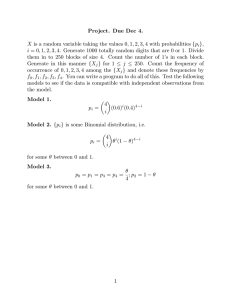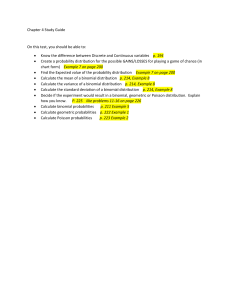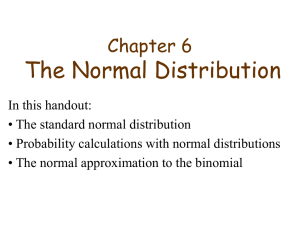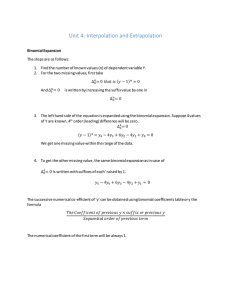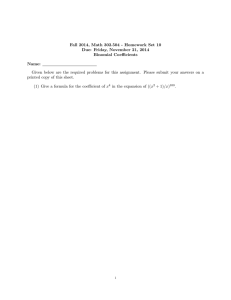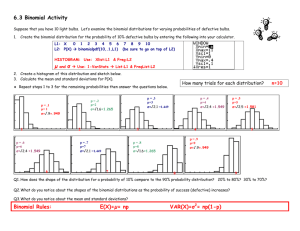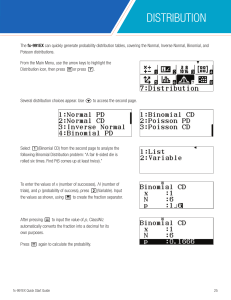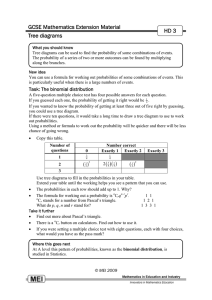Math 6070-1, Spring 2006, University of Utah Project #1
advertisement
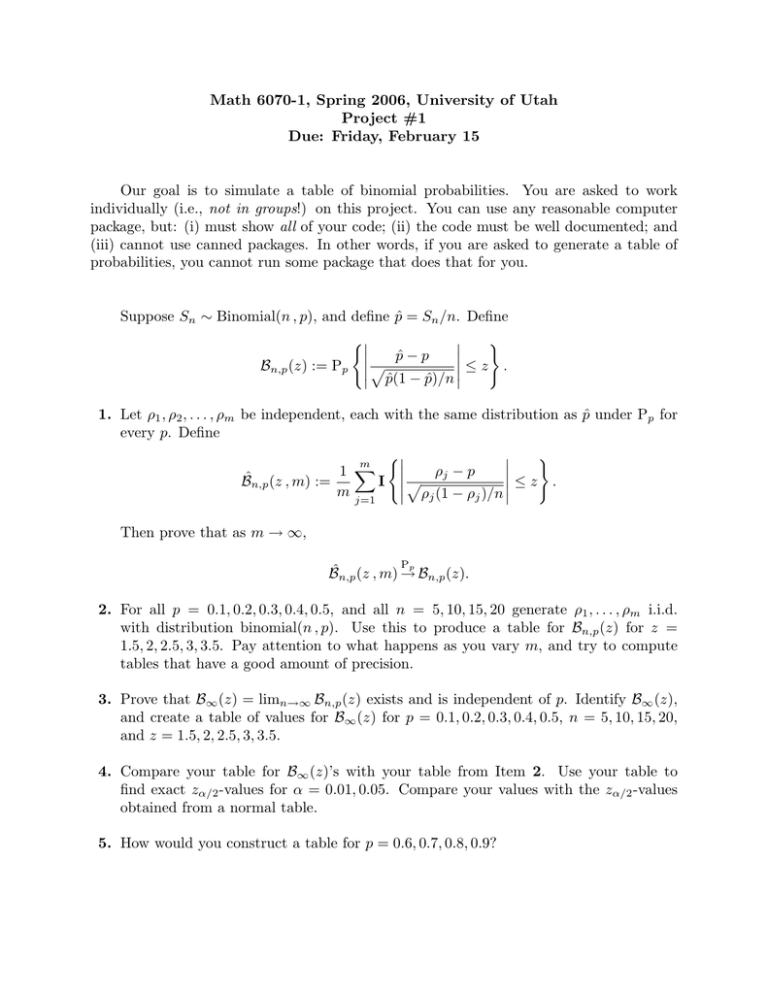
Math 6070-1, Spring 2006, University of Utah Project #1 Due: Friday, February 15 Our goal is to simulate a table of binomial probabilities. You are asked to work individually (i.e., not in groups!) on this project. You can use any reasonable computer package, but: (i) must show all of your code; (ii) the code must be well documented; and (iii) cannot use canned packages. In other words, if you are asked to generate a table of probabilities, you cannot run some package that does that for you. Suppose Sn ∼ Binomial(n , p), and define p̂ = Sn /n. Define ) ( p̂ − p Bn,p (z) := Pp p ≤z . p̂(1 − p̂)/n 1. Let ρ1 , ρ2 , . . . , ρm be independent, each with the same distribution as p̂ under Pp for every p. Define ) ( m 1 X ρ − p j B̂n,p (z , m) := I p ≤z . ρj (1 − ρj )/n m j=1 Then prove that as m → ∞, Pp B̂n,p (z , m) → Bn,p (z). 2. For all p = 0.1, 0.2, 0.3, 0.4, 0.5, and all n = 5, 10, 15, 20 generate ρ1 , . . . , ρm i.i.d. with distribution binomial(n , p). Use this to produce a table for Bn,p (z) for z = 1.5, 2, 2.5, 3, 3.5. Pay attention to what happens as you vary m, and try to compute tables that have a good amount of precision. 3. Prove that B∞ (z) = limn→∞ Bn,p (z) exists and is independent of p. Identify B∞ (z), and create a table of values for B∞ (z) for p = 0.1, 0.2, 0.3, 0.4, 0.5, n = 5, 10, 15, 20, and z = 1.5, 2, 2.5, 3, 3.5. 4. Compare your table for B∞ (z)’s with your table from Item 2. Use your table to find exact zα/2 -values for α = 0.01, 0.05. Compare your values with the zα/2 -values obtained from a normal table. 5. How would you construct a table for p = 0.6, 0.7, 0.8, 0.9?
